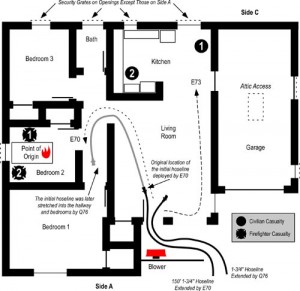Fire alarm systems category
A fire alarm system is an automatic device which detects any fire hazards. Automatic fire alarm systems will notify the occupants to evacuate the building. The event will then be reported to a pre-programmed off-premises location for necessary action.
Once a fire risk assessment is carried out and goals have been established, fire alarm designing will begin. Usually fire alarm designers undertake the responsibility of designing the fire system with detailed descriptions. Level of protection required by British standards, recommended components, positioning detectors, required panel and many technical aspects of the designing will be completed.

In accordance with BS 5839, there are many types of fire alarm systems in the UK. When designing a system, designer should identify the system type.
Manual systems – M: This is a manual system where automatic detectors are not being used. In the event of a fire, manual call points will be activated by user. This type of system should be used in places where occupants sleep overnight.
P1 system: The system is installed in every part of the building apart from low-risk areas such as toilets and cupboards less than 1m².
P2 system: Detectors should be placed in areas where the risk is high or where business needs smooth running without disruption.
L1 system: In category L1, the whole building is covered by automatic detectors. This includes areas such as roof spaces, loft spaces and voids. The building is expected to have sleeping occupants and the system is installed throughout to detect any early sign of fire. Most care homes will come under this category.
L2 system: Automatic detectors are installed at escape routes, rooms adjoining escape routes and high-risk areas. This is an ideal system for a medium sized business with no more than 10 sleeping residents.
L3 system: The system gives early warning to everyone; detectors are installed in all escape routes and rooms which open onto it. More comprehensive system than category 4, the main objective is early warning and evacuation of the building.
L4 system: The objective of the system is to protect the escape routes. System covers circulation areas and escape routes. Any changes to the size or complexity of the building may require additional detectors in other areas of the building.
L5 system: This category is a custom category. If the building requires special requirements such as computer rooms needing extinguishing system triggered by automatic detection.
Once the category is decided, a fire alarm system will be constructed.
